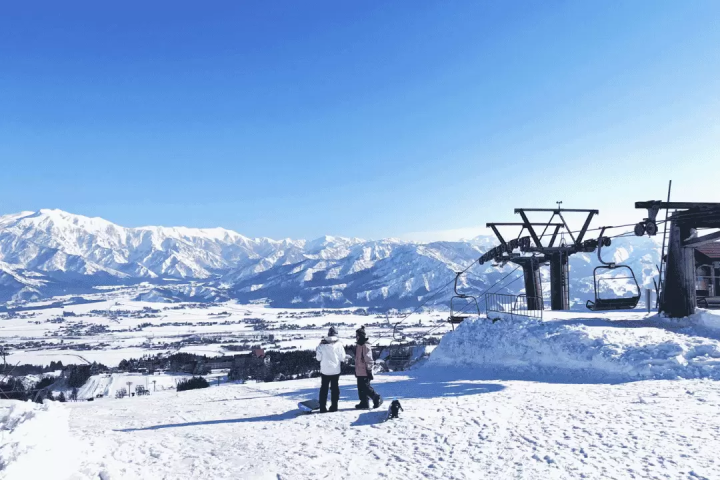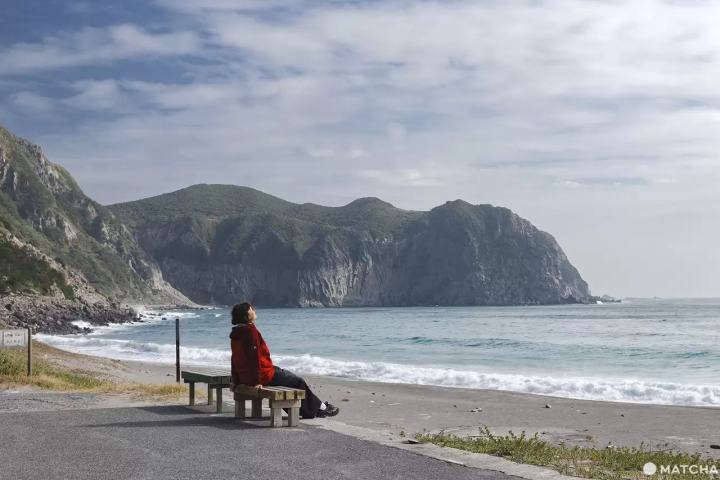Unravelling the World of Japanese Sake from the Renowned Local Sake Brand of Oki Islands in Shimane Prefecure, Oki Homare

Speaking of the cold season, nabe (Japanese hot pot) and sake (Japanese rice wine) spring to mind. The Oki Islands are remote, but we are blessed with famous natural spring water and there is a sake brewery that makes delicious sake.
In this article, Mr. MORI Akira, the owner of a liquor store in a local shopping arcade and a first grade brewing technician, recommends some of the local specials, from refreshing ones to sake with rich flavours. Enjoy.
Oki Homare Junmai Ginjo

The first sake to be introduced is the classic, Oki Homare Junmai Ginjo. This sake has a rice-polishing ratio of 55%*, making it refreshing and smooth to the palate. Mr. Mori highly recommends using this sake to make steamed crab.
*Rice-polishing ratio (seimaibuai): The percentage of rice left over after the brown rice (genmai) has been polished. Oki Homare Junmai Ginjo has a rice polishing ratio of 55%, and it is made from brown rice that has had its surface polished by 45%.
≫Click here for information on Oki Homare Junmai Ginjo 1.8L (Japanese)
Oki Homare Junmai Daiginjo Tobin-Kakoi

Next, is Oki Homare Junmai Daiginjo Tobin-kakoi. “Tobin-kakoi” is a sake brewed using a process called moromi. The ingredients are put in a cloth bag to ferment. The dripping liquid from the soft solid is collected in a tobin (a bottle with a capacity of 18L) and stored at low temperature.
This sake has a rice-polishing ratio of 35%, and since the drops are collected without the ingredients being squeezed, there is no unfavourable taste (zatsumi) and the aftertaste disappears quickly. It has a very fragrant and fruity taste, with a delicate sweetness that is simply gorgeous and makes a great toast.
≫Click here for information on Oki Homare Junmai Daiginjo Tobinkai 720ml
Oki Homare Muromachi-no-Junmaishu 90

The third item is "Oki Homare Muromachi no Junmai Sake 90" Oki is also famous as a land of distant currents, but in Japanese history, the story of Emperor Gotoba and Emperor Godaigo being exiled to Oki is heard. Many of you may have. Muromachi Junmai Sake 90 is a reproduction of the sake that Emperor Gotoba and Emperor Godaigo once drank, based on the recipe described in the document "Goshu no Nikki". This sake, which has a rice polishing ratio of 90% and is mostly brown rice, is made using the kimoto-zukuri method, which is the method used at the time, and utilizes the power of natural fermentation. It has an amber color and a very heavy taste, but the aftertaste is sharp and can be drunk cleanly. It is recommended to be drunk with dishes with strong flavors such as Chinese food, Italian food, sukiyaki, beef stew, eel, etc. It can also be enjoyed hot.
≫Click here for information on Oki Homare Muromachi no Junmai Sake 90 1.8L
Oki Homare Edo-no-Junmaishu 90

The last one on the list is Oki Homare Edo-no-Junmaishu 90. This is also a reproduction of sake from the past; you can feel the history with this one. During the Meiji Restoration, there was an incident known as the “Oki Rebellion” (1868), in which the magistrate of the Matsue Domain was expelled from the islands and a self-governing government was established.
Edo-no-Junmaishu is a reproduction of the sake that the islanders gifted to the departing magistrate of the Matsue Domain, which was also presented to Koizumi Yakumo (Lafcadio Hearn) when he visited the islands. In fact, Hearn left a record of him drinking this sake, stating “it goes well with Japanese food. It has the colour of a lemonade and the strength of a sherry; it brings a pleasant tipsiness but it does not linger.” This sake is full-bodied yet very dry and has a good aftertaste, just like a dry sherry or a dry wine.
This sake goes well with dishes with a slightly strong flavour, such as yakitori (grilled chicken skewers), tempura, etc. This sake is also brewed using the kimoto-zukuri method of natural fermentation, which was also popular during the Edo Period (1603 - 1868).
≫Click here for information on Oki Homare Edo no Junmai Sake 90 1.8L
How did you like it?
According to Mr. Mori, “a good sake is characterised by its aftertaste which disappears very quickly.” Therefore, if you keep in mind the rough differences such as rich and light, dry and sweet flavours, then you will be able to pair the sake with different cuisines and dishes.
This time, Mr. Mori has recommended 4 of the local Oki sake. We hope that this article will give you a slight sneak peek into the world of sake on the Oki Islands. If you enjoy Japanese sake, come visit us and try our local sake!
Translation into English: Cleo Wong
For more information about the Oki Islands in Shimane Prefecture, please visit our official English Website!
The Oki Islands are an archipelago located about 50 km north of the Shimane Peninsula, and consist of 180 large and small islands. There are four inhabited islands in total, and they are mainly divided into two areas: Dōzen and Dōgo. Dōzen consists of three islands, Nishinoshima (Nishinoshima Town), Nakanoshima (Ama Town), and Chiburijima (Chibu Village), while Dōgo consists of one island where Okinoshima Town is located. These four islands and the surrounding sea have been designated as a UNESCO Global Geopark for their geological heritage, landscapes, and unique culture of international importance. The Oki Islands Geopark Management Bureau is an organization established to protect the Oki Islands UNESCO Global Geopark and pass it on to the next generation. English website: https://visit-okiislands.e-oki.net/ Oki-Toku Special Ticket Campaign Site (get your return ferry ticket for free!): https://www.oki-toku.jp/en/ Japanese website: https://www.e-oki.net/
The contents on this page may partially contain automatic translation.




























![[30 minutes by train from Meitetsu Tokoname Station!] A must-see for couples! Recommended date Feature Articles in Aichi Prefecture](https://resources.matcha-jp.com/resize/720x2000/2025/12/19-253428.webp)

